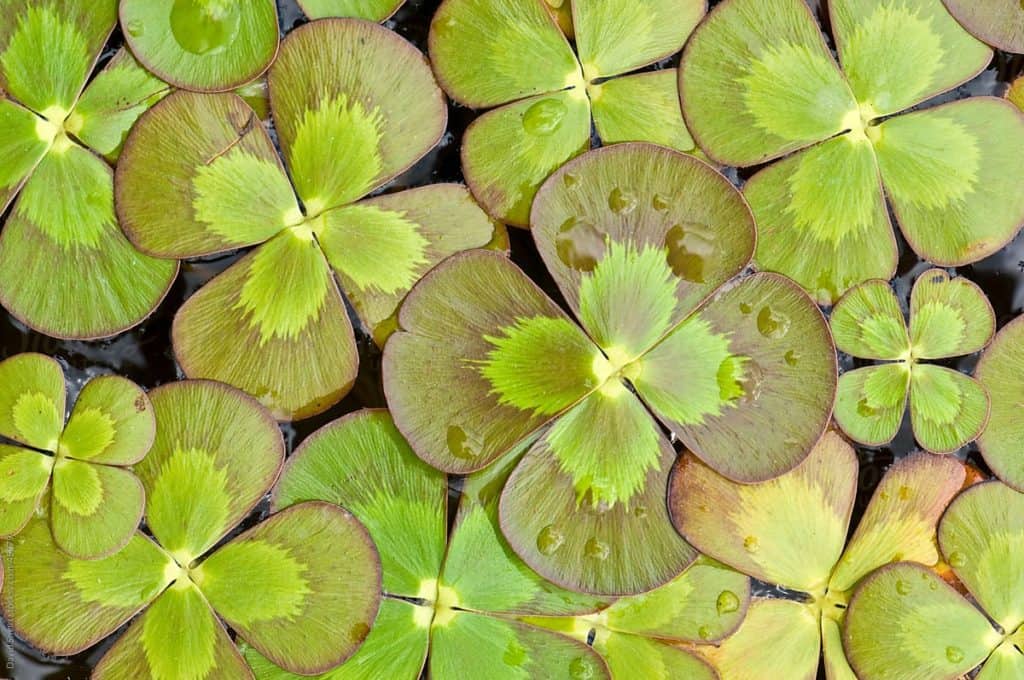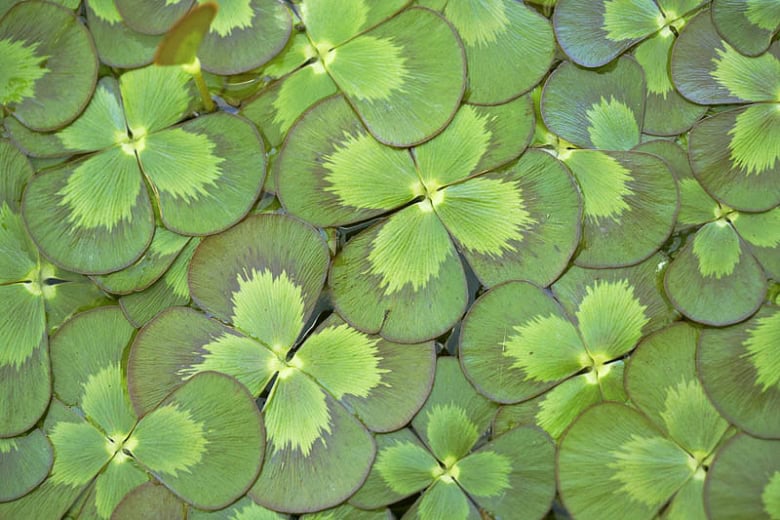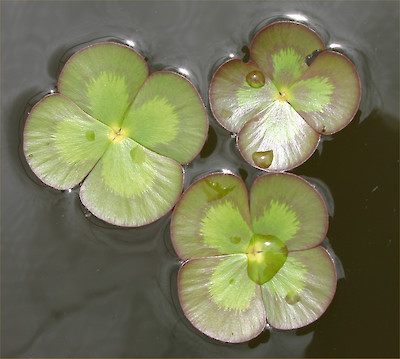Banded Nardoo
weed identification
Aquatic fern with fronds that resemble four-leaf clovers 2-7cm long. Glossy green with a characteristic red to brown arching stripe on the leaves. Native Australian aquatic plant that is not normally problematic, however can pose an issue in nutrient-rich environments.
Prefers slow moving water bodies such as ponds, dams, freshwater lakes, and wetlands. Also grows in wet soils.
Reproduces via spores or rhizomes. The sporocarps protect the spores during dry periods. They open readily once wet and release the spores into favourable conditions.
Spores need to be submerged in water to germinate. Can be reproduce rapidly in favourable environments.
Aboriginal people ground the dry capsules to produce flour for baking.
What does Banded Nardoo look like?
Disadvantages of Banded Nardoo
Full coverage of a pond or dam by Nardoo is uncommon but may cause significant problems such as:
- Reduce oxygen diffusion
- May shade out submerged vegetation
- Provides breeding ground for mosquitos
- Changes the water chemistry to favour harmful algae and bacteria
treatment
AQ200 Aquatic Herbicide + Wetting Agent – Chemical Herbicide designed to kill free floating weeds quickly. Use on mild to severe infestations.
Aquatic Weed Rake – DIY physical removal. Ideal for mild infestations, sensitive water bodies or to aid herbicide treatment.
Aquatic Harvesting – Large amphibious machine that clears the surface of floating aquatic weeds. Book this service for severe infestations or for larger water bodies.
prevention options
Aerating Fountains – Reduces the severity and likelihood of aquatic weed infestations. Use in any body of water.







